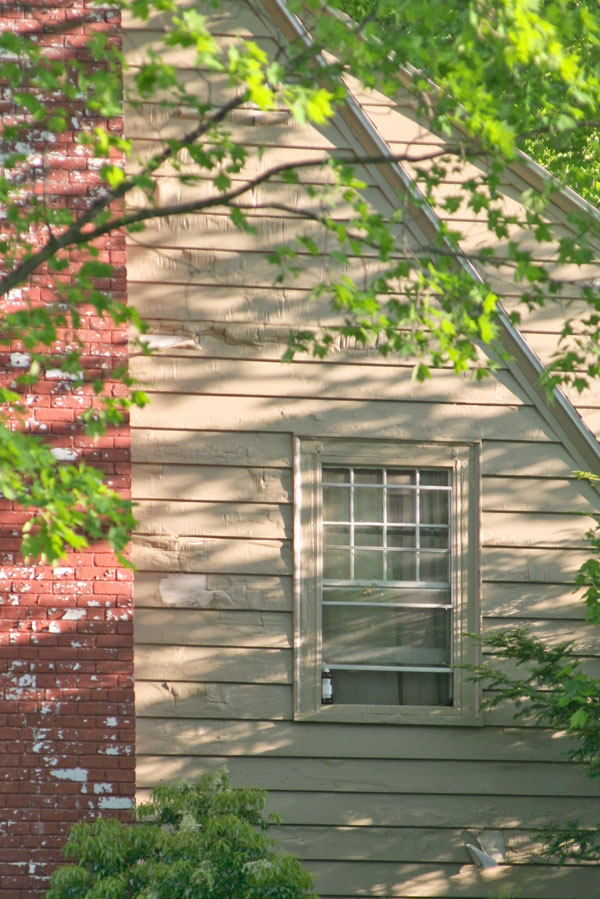
Image Credit: Daniel Morrison
This house is down the road from mine. The paint job was new a couple of years ago. Before that the paint was in pretty good shape on all walls of the houses except this one: this wall looked like it does now. I suspected then that there was some sort of moisture problem going on. After they re-painted, and the wall re-peeled so quickly (within six months), I was sure that it wasn’t poor prep or cheap primer.
This is the north side of the house (sunlight is visible because the sun is setting).
What do you think? Why is this paint coming off in sheets?
Read More:
From Q&A: I have a problem with peeling paint on a 1920 house in Nashville, Tenn
From Building Science blog: BS Podcast: The Perfect Wall, Roof, and Slab
From Musings of an Energy Nerd: Vapor Retarders and Vapor Barriers
In Fine Homebuilding:
There’s No Escaping the Scraping
Weekly Newsletter
Get building science and energy efficiency advice, plus special offers, in your inbox.





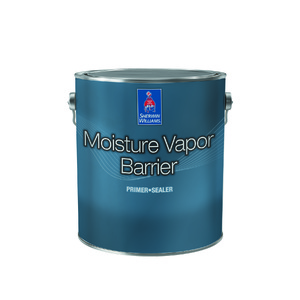
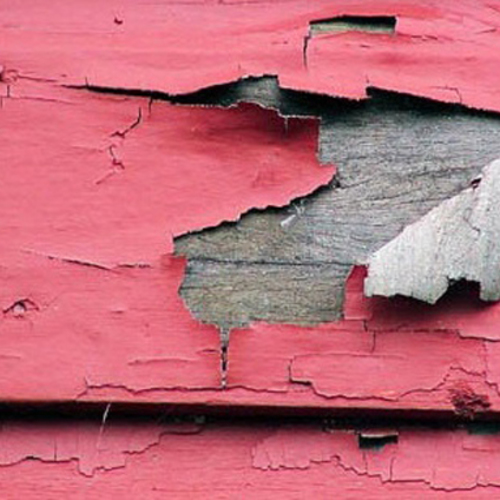
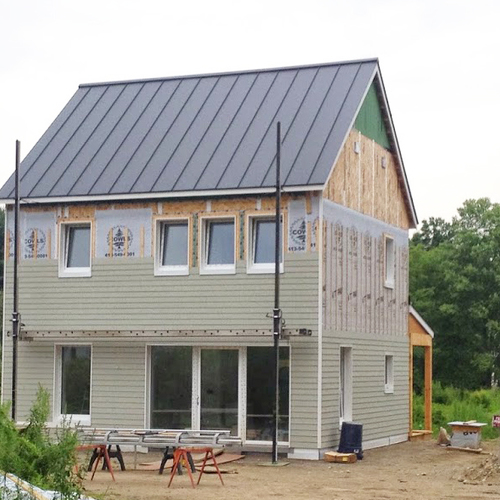
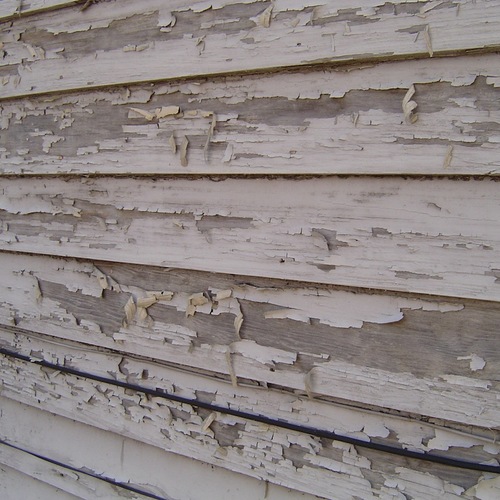






28 Comments
Paint Peeling in Sheets: Why?
I think the answer is vapor pressure. This older house was probably insulated at some time without an adequate vapor barrier being installed on the interior side of the wall. Now they have created a vapor retarder on the exterior of the building and the vapor pressure is pushing the paint off of the wall.
Probably not vapor pressure
Not enough information. The construction of the wall needs to be investigated.
Unlike Dan Bossenbroek, I doubt the "vapor pressure" theory. Although painters often blame the lack of an interior vapor barrier for paint problems, this is rarely the cause.
Simply insulating a wall makes the siding colder, and therefore wetter. The better insulated the wall, the greater the need for a rainscreen installation — if you want the paint to last.
In some cases, these problems are due to siding being directly installed over foam sheathing. But without more information, any opinions amount to speculation.
Lack of Energy Flow Across the Enclosure
I think Dr Lstiburek may have the generic answer....
http://www.buildingscience.com/documents/insights/bsi-028-energy-flow-across-enclosures/?topic=/doctypes/building-science-insights
Water vs Oil based paint
Consider that the new paint may be latex and the original was oil based. If the house was not sanded and primed the latex paint will come right off. Try an adhesion test on some other walls to see if the problem has just not shown up yet.
The paint is only coming off in sheets on that one wall
The whole house was prepped, primed and painted the same way, and the previous paint job peeled on the same wall.
So I don't think it's a paint/prep problem. And I'm reasonably sure that this house isn't sheathed in foam. It's an olf house in an established neighborhood.
C'mon, John, I'm an editor; don't make me read, give it to me in three short sentences!!
I think it's a localized water problem -- unvented bathroom or something like that.
Anybody else notice the beer bottle propping the window open?
Beer Bottle
Dan,
I noticed the Beer Bottle .... perhaps a clue ....maybe a "Grow Room" ;-)
maybe not a good idea to quiz your neighbor.
I agree with Martin... not enough info
I still think the Lstiburek Insight offers some good clues about what could be causing the problem.
If you do not like to read at least look at the pictures.
Moisture drive
There's a 50's house near me with the same condition... only the north side and only the exterior wall of the bathroom. My bet is on moisture drive.
weather??
A professional painter will tell you that not depend in prep. all depend in WIND and SUN and of course the position of the house, some other point have to be taken in consideration, but let me tell you this, if a good paint give you at least a couple years that's good, no paint can give you any guarantee that will stay in good shape for long years, but like I say all depend in the place, you mention that at least 50 houses around you have the same problem, but all of them have it in the same side?? If yes, then consider what I'm telling you,.... my solution??
Paint Peeling
Notice the chimney brick paint is a problem, too. I would assume that there is a connection between the wall and the chimney/fireplace. Checking to make sure that there is a good seal between the two is worth checking. It would be worth looking at it with a thermal imaging camera that would spot the moisture, insulation, vapor barrier problem.
Interesting subject matter.
Interesting subject matter. I am very curious as to how my paint job on the north side will hold up over the next few years. My house is old (circa 1840 and with the original siding) and when I decided it was time to repaint, I prepped it by stripping the clapboards to bare wood, priming with a tinted alkyd primer and painting with the best acrylic paint on the market. Also, last fall, one month after finishing the paint job, I added insulation into the wall cavity (from the inside of the house) and painted the inside walls with a vapor barrier paint. In the process of stripping the clapboards, I found that the previous homeowner had applied caulk horizontally under each clapboard. I removed all of that caulking (now the clapboards have a thin little space between each one) and hopefully, moisture that somehow does manage to accumulate will find its way out. So far the paint still looks great. No bubbling or peeling, and I am hoping for 10 to 15 years out of this paint job. In the subject house, it has to be a moisture problem of some sort. Maybe after it was prepped, it wasn't sealed quickly enough with a good alkyd primer, or the primer went on on a high humidity day (a great tool to use is wood moisture meter). Without knowing what kind of wall assembly this house has, any answer is guesswork. Good luck on solving this problem.
Two thoughts
Two quick thoughts:
1 - you mention that "good paint jobs should last 12-20 years..." I generally don't see that with wood siding materials. Closer to 6-10. At least here in the midwest. But agreed - 6 months is atypical.
2 - doesn't matter how good the prep or the paint if the wood siding wasn't dry before application of primer and finish coats. When we work with historical wood sidings and trims we always make sure that the materials are in the proper range before application. Being on the north side of the home, it may have never had a chance to dry out.
I also thought the comment about the chimney showing efflorescence was a good catch. Might be a clue to a larger problem... pourous brick, cracked chimney cap, poor flashing, etc...
Peeling paint--sealed old wood
I believe that from the picture I could see that the preparation before painting had included stripping most or all of the paint off the old wood siding. Based upon the one large section that had peeled completely the surface below looks chalky white. This would indicated that the wood pores were sealed by the paint not removed. The new paint, with primer or not, did not absorb into the wood and bond properly. The north side of the house, with little sun, allowed moisture on the paint to stay on it for longer and encourage the paint to fail quickly. I believe the other painted wood surfaces will fail soon. The wood should have been sanded and ruffed up more in prep, primed with oil, resanded, reprimed and then finished with two coats. This is my best guess.
peeling paint
this is probably a side of the house that gets very little sun. the clapboards are not back primed. the expansion and contraction of the wood over the years have left many voids for rain to get up behind the cladding either by wind driven rain or capillary action or both. if the house has been recently insulated, that will certainly contribute to the problem, creating a cold wall cavity where it was once warm and dried itself out. It is almost certainly not a vapor barrier issue (i dont think it ever is).
also, it its coming off in
also, it its coming off in sheets like it is, it is from moisture getting behind the wood. it is not a prep issue.
Pretty sure its water
Why does paint pop off wood? Lack of adhesion. Why the lack of adhesion? Either the wood or the paint. The paint is the same all over - but the wood can change due to location and orientation. I am guessing there is a "sponge" right under the wood, or the wood is sitting on a moisture barrier that keeps it wet.
Here in Portland, Oregon you can see a lot of houses with failing paint jobs - most of them newer houses. We have one development - about 6 years old - where the paint is really bad, and has been for a while. These are high-end homes (500K to 800K). The next development over - same builder - from 4 years ago has all good paint. What is different - the new ones have a rain screen. The siding dries out, simple as that.
I would bet that there is place on this house where water is getting in and running behind the siding,, and staying on the wood.
One more to consider
Afternoon sun could also be considered. Painting a very warm or hot surface would make the paint dry before it can bond with primers or other paint. Or, dust/ dirt left on the siding. If water is the culprit there should be peeling on the bottom of the lap.
Although, diagnosing a problem via picture is never the answer.
Peeling paint
Thats an odd problem.
I zoomed in on the pic and can see the white primer is still ok looking. Just looks like the paint has peeled away from the primer.
My guess is that the primer was'nt completly curred when they applyed the paint. The paint could not stick to the primer because of moister from the primer being not curred. This created a barrier between the two and allowed the paint to peel off.
Prep & Product
I recently removed, repaired and repainted a 100 year old historic church. The process I used was 90% prep and very labor intensive but very rewarding completion. I used an Infrared heater and a swiss scraping tool too remove 18 sq in at a time, then I sanded the surface with a 60-80 rough grit. I then caulked all cracks with a 50 year paintable caulking. My final and most rewarding procedure was to paint the surface with a Organic boiled cold processed Linseed Oil 50 year paint. I found out this info on the web page googled from "50 year paint" . This was the only way to do the job right and know that it will last for years to come. the awesome Alback Linseed paint breaths with the home and does not encourage mold or moisture accumulation. This was very labor intensive and very rewarding. I hope you are successful in your endeavor and remember what Mike Holmes always says "do it right the first time".
Peeling Paint
If you don't find a solution in some of the other advice given to you, I would look at another moisture problem. Latex paint will crack and allow moisture to get in behind the boards. This will make the boards hold water and will rot the boards. I would also look at how close trees, bushes, and vines are to the house. Follage too close to the house will cause motar joints to go bad, as well as cause moisture that will cause molds and moss to grow on the house. Having it too close on the north side of the house will on ly compund the problem.
Peeling paint
I've come across this situation twice in my 18 yr. career. Both times it was a cedar or pine clapboard siding. One was built in the 1930's and it had huge peeling bubbles. After Benjamin Moore did some investigating they found that the original house had been stained with pure linseed oil every season and when covered with primer and paint, tried to leech out when the sun was on it. This paint job lasted 6 months the first time, then only 3 months the second. Solution (Moore's recommendation) - Re-side.
The 2nd house had pine clapboards but it was trapped moisture. The clapboards were still too wet when painted. Solution - Stripped as much as possible, waited 1 year to dry then primed and painted. This paint job last 8 1/2 yrs. before it started peeling again.
peeling paint
Many think that the lap siding should NOT be sealed up so tight. Sticking small "wedges" under the lap, or using those round vented plugs will allow moisture to escape. This has worked in northern Ohio with much success.
peeling paint
Waited too long after primer was applied and surface was dusty.
Anyone else notice there is
Anyone else notice there is no failure of the paint on the side of the roof dormer which is on the same side of the house as the wall in question? What's the difference?
peeling paint
This happened to my house on only two sides. The other two sides held up for years. The reason? Too long a discussion. The solution is to use solid color stain.
Peeling Paint
Looking at the enlarged image, bottom right, I can see white primer on the back side of the peeling paint. So it is an adhesion issue between primer and siding. People are guessing that this is wood siding, I could not see that detail specified. The facia seems to include J-molding. The siding looks awfully uniform and flat and manufactured. If (IF) this is metal siding there might be a heat transfer issue from the chimney. Aluminum will transfer the heat and cold rapidly. Some of the new latex paints/primers are unreliable.
Turning off the heat for 4 weeks would be good. Latex paints take 30 days to cure.
It was also an excellent suggestion to check the moisture reading, if it is wood siding. Remember, a proper moisture meter has a table for different types of wood. Without it, a meter is useless.
Peeling paint
Paint or stain generally peels for one of two reasons: there is moisture between the paint/stain and the substrate whether from application on a non-dry surface or from migration through the substrate; or the carrier of the pigment evaporates before the pigment has the opportunity to sink into the substrate and bind to it.
Since this is a northerly exposure, we'll assume that the second cause is unlikely.
I notice that the chimney brick seems to have a fair bit of efflorescence - a sign of moisture migrating through the porous brick. I also note that the pattern of peeling seems to radiate from the chimney towards the far wall, with no peeling on the other dormer.
All things being equal with prep, priming and application of the paint, I would investigate to see if there is any moisture transmission barrier between the brick of the chimney and the siding itself. Isolating the siding from the possible source of moisture conducted through the brick might solve the problem.
Will someone ever find out?
I could guess that there is a moisture problem like most everyone else. I thought the brick was decorated with white like used brick It seems to well defined to be effloresence, but the flashing sure could be suspect. I noticed the peeling seems to be worse in the area I'm assuming to be attic, or above the ceiling of the main floor. Especially just above the ceiling. The rakeboard and shinglemould paint seems to be bonded well enough, and it was probably applied the same day as the field area. The problem is coming from inside the envelope.
There could be a dryer or bathroom fan vented into the attic, a leaking roof, any number of things that were not conveyed by this limited picture.
I agree with one other poster
I'd hazard an educated assessment that the backs of the clapboards either aren't painted or prepped, leading to moisture coming through the clapboards and forcing the paint off the surface. All six sides (F,R,T,B, and both ends) must be treated/coated/sealed in order for the coating - the paint - to be effective, assuming the painter also ensured the clapboard material was within the manufacturer's moisture tolerances when the paint was applied. I'm an owner's representative, and I've seen painters not ensure all sides are coated and/or wanting to paint when the air and substrate moisture content is outside the manufacturer's requirements.
Log in or create an account to post a comment.
Sign up Log in